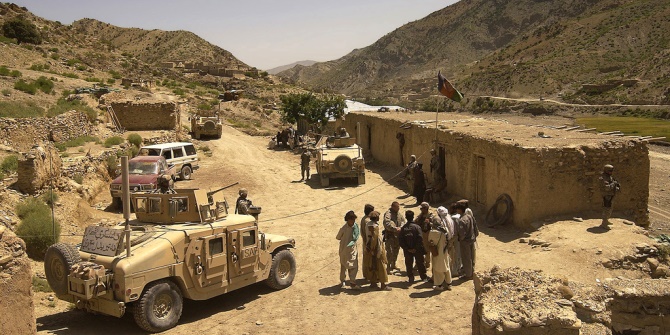 Popular with everyone in the city, from businessmen to tourists, the rickshaw provides a form of transport that can often prove more efficient than cars or buses. Yet few question how they come to be so heavily decorated and the processes behind it. On a recent trip to Dhaka, Adib Chowdhury visited a rickshaw workshop to find out more.
Popular with everyone in the city, from businessmen to tourists, the rickshaw provides a form of transport that can often prove more efficient than cars or buses. Yet few question how they come to be so heavily decorated and the processes behind it. On a recent trip to Dhaka, Adib Chowdhury visited a rickshaw workshop to find out more.

The labyrinthine streets of Old Dhaka echo with the ringing of rickshaw bells navigating their way through the network of ancient roads dating back to the Mughal Empire. Old Dhaka is the humble birthplace of many rickshaws in the area. These uncomfortable, yet eye catching technicoloured bikes wheel passengers across the sprawling city at any time, whatever the weather, and are as old as the streets themselves. Equipped with tremendous stamina as well as a quick wit, most rickshaw drivers navigate their way through everything on the road from buses driving head on towards you, to goats and cows crossing at random intervals. Popular with everyone in the city, from businessmen to tourists, the rickshaw provides an alternative form of transport whenever buses or cars break down and can sometimes navigate their way through traffic faster than either of them.
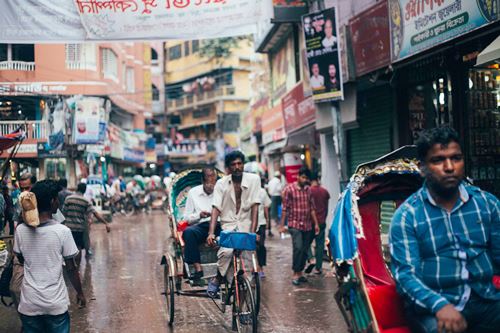
The drivers, or ‘Rikshawallahs’, can also often be a source of entertainment telling stories of everything they have seen on the roads of Dhaka, which being one of the most densely populated spaces on the planet, provides for countless numbers of tales. Rickshaws are a common sight amongst the traffic laden roads of the city yet few question how they come to be so heavily decorated and the processes behind it.
In Old Dhaka lies Sarder Street, home to the workshop of Tekka Meaker [Takka Mistree] who paints and assembles rickshaws alongside his apprentices. Whilst the street is filled with workshops welding metal frames together for the bike parts, there are few workshops which focus on the decorative aspect as it is a highly skilled profession. After some conversation, Takka pointed to newspaper clippings pasted on the walls of his workshop telling me of how he had painted the rickshaws on which famous cricket players had sat and posed for photographs on during the ICC Cricket World Cup 2014.

The workshop walls are adorned with plaques containing paintings from scenes of Bollywood, mythical stories, religious scenes, local landmarks, animals and many more subjects ready to be placed on the wooden or metal frames of the rickshaw carriages. As well as plaques, rickshaw hoods and intricately patterned carriages line the walls. The street is reserved solely for the making of rickshaw parts and little else creating a unique atmosphere in contrast to the usual hustle and bustle of the city.
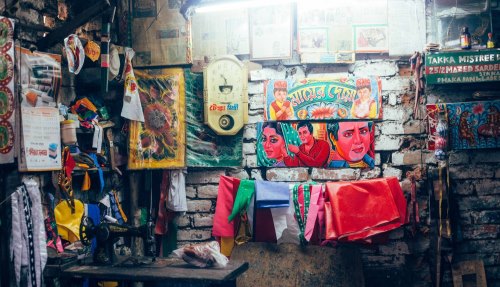
The decorative paintings conjure up an urban fantasy containing the present, past, and future dreams of the country, mixing mythical stories and contemporary events together creating a unique series of images that do not necessarily have a particular meaning when combined but allows room for individual expression and interpretation. The vivid scenes enable a momentary escape from the roar of city life and dust that clings to the air from the movement of people and vehicles to a world in which tigers sit around tea tables and Bollywood stars are in character from favourite movies.
Painting acrylic on the tin plates makes the colours hard to mix, hence the heavy usage of primary colours and a lack of shading detail resulting in images which have a distinctively recognisable yet individual style to them. Much of the painting is done by hand on separate pieces which are then joined together onto the wooden or metal bodies of the bikes and carriages. The number of rickshaws produced in the workshop has declined over the years due to an increase in other methods of transport. The overall length of time to decorate and assemble a body is around three days.
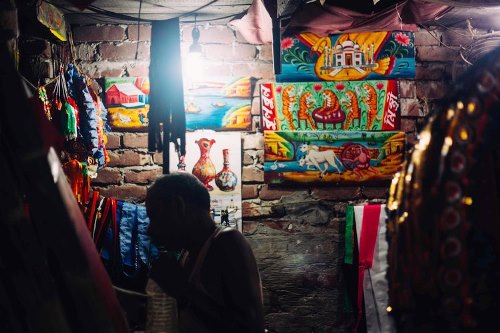
With the popularity and ease of screen printing, screen printed movie plates are dominating the market reducing the role of the traditional painters as fewer people appreciate their artwork thinking it to be all machine printed. Furthermore, a reduction of themes for images has resulted from the mechanised process. Nonetheless, Takka remains proud of his artworks and those of his apprentices, and the coverage of his work during the ICC world cup confirms his belief that there are still people who value the skill. Bangladesh remains as dependent as ever on rickshaws alongside the artists who contribute their skill into decorating them. Bangladesh will always be synonymous with this colourful and unique mode of transport that is unchanged and as ancient as the streets of Old Dhaka itself.
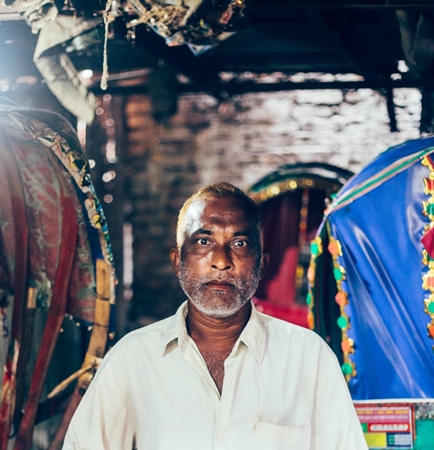
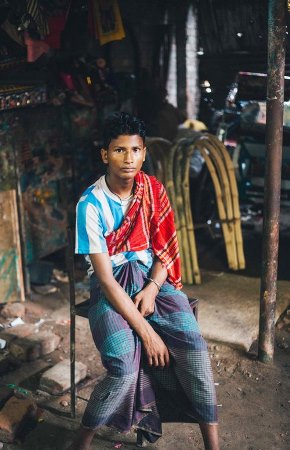
Adib Chowdhury is a photographer interested in social documentary photography, currently studying for an MSc in Conflict Studies at LSE.
He tweets @adibchow and you can see more of his work at www.adibphotography.com.
Note: This article gives the views of the author, and not the position of the India at LSE blog, nor of the London School of Economics. Please read our comments policy before posting.



